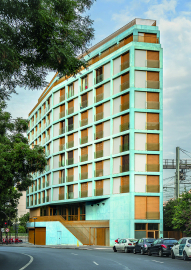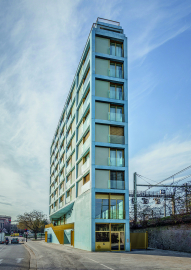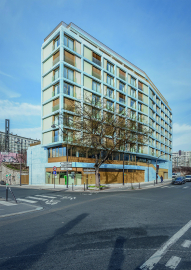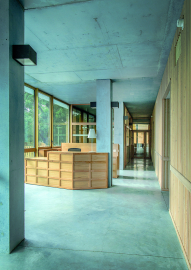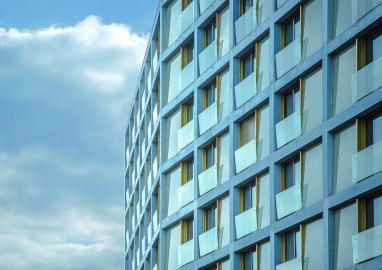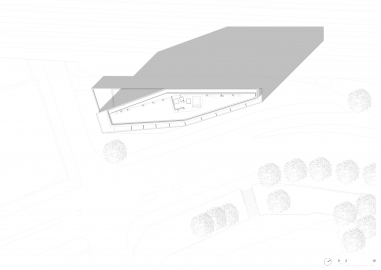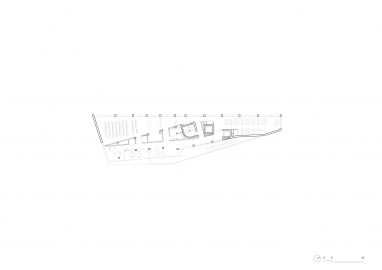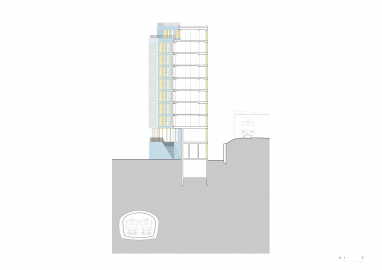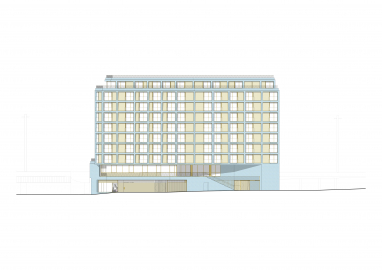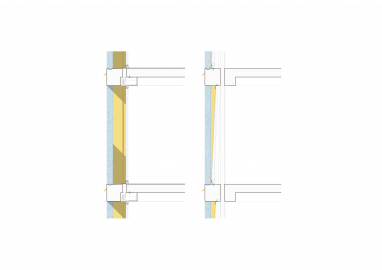Hyphen
Located in the south of Paris, the building introduces a new movement, the dynamic of a city reaching out toward its suburb.
The building is presented as a single entity. One and unbreakable.
A clear, non-oriented geometry that addresses all sides equally to establish a relationship with its context.
The building was designed as a structure accommodating 3 programs :
- a social residence for the young economically active,
- a pedagogical platform
- a distribution center for the "Restos du Coeur" charity.
Although the functions are nested due to the narrowness of the plot, we have sought to express the readability of the programs. Each entity has its own position and entry. On the north prow, the entrance to the residence follows on from the grid of the facade, while the training center is accessible by a staircase carved into the mass of the building's base. To the south, where the sidewalk widens and the sun is most generous, we find the entrance to the Restos du Cœur.
Between the railway tracks to the west, the ring road to the south and a hard traffic road to the east, the plot submitted for the competition was an abandoned sidewalk that was converted to turn constructible. Due to this former public domain status, the plot was crossed in its basement by infrastructure element. The basement was cluttered with an emergency exit from the ring road, a subway pumping station, and a multitubular telecom line crossing. The presence of the 13th subway line directly above the plot added an additional constraint for the transmission of loads in the basement.
The challenge of the project was to succeed in defining a simple figure that breaks away from the constraints to react to the urban environment, seeking to establish a relationship with the buildings on the other side of the ring road. Its stretched and regular shape echoes the neighboring residences of the 60’s and also responds to the characteristic tripod shape of 70’s architecture offices.
The building asserts itself through the expression of its structure while limiting the concrete material to its sole supporting role.
This unique materiality responds to the different treatments of the envelope with a solid base and a structural grid in the upper part.
Thus, the grid which constitutes the facade is also the structural framework of the building. The choice of colored concrete in the mass responds to the principle of an expression of the material as a structural element. We could not get along with an added color, it was necessary to consider that it was the very material that was colored and that carried the building.
As a counterpoint to this mineral grid, framed glass and aluminum panels with variable inclinations bring shine and sparkle that illuminate the facade following along the day.

